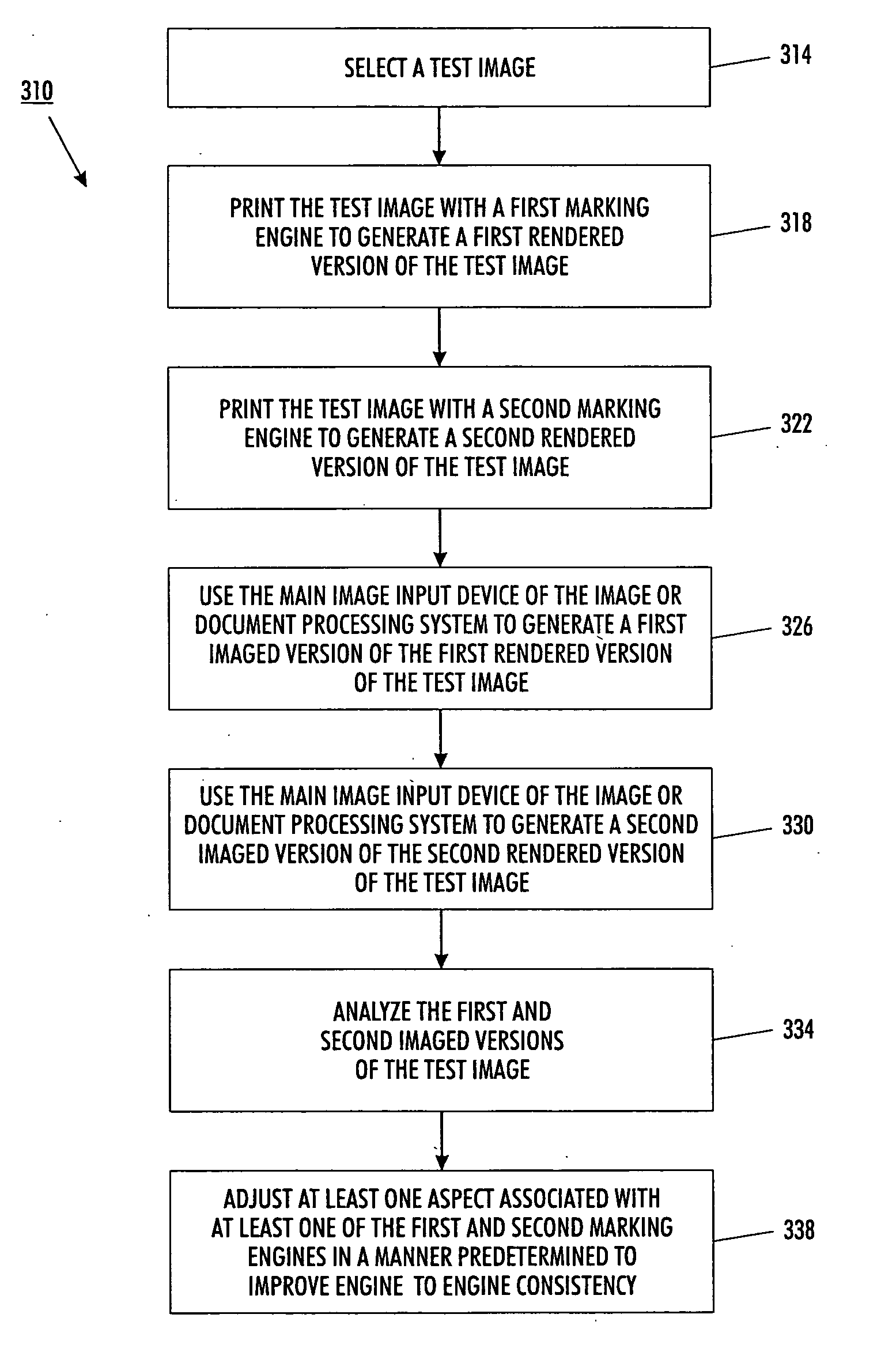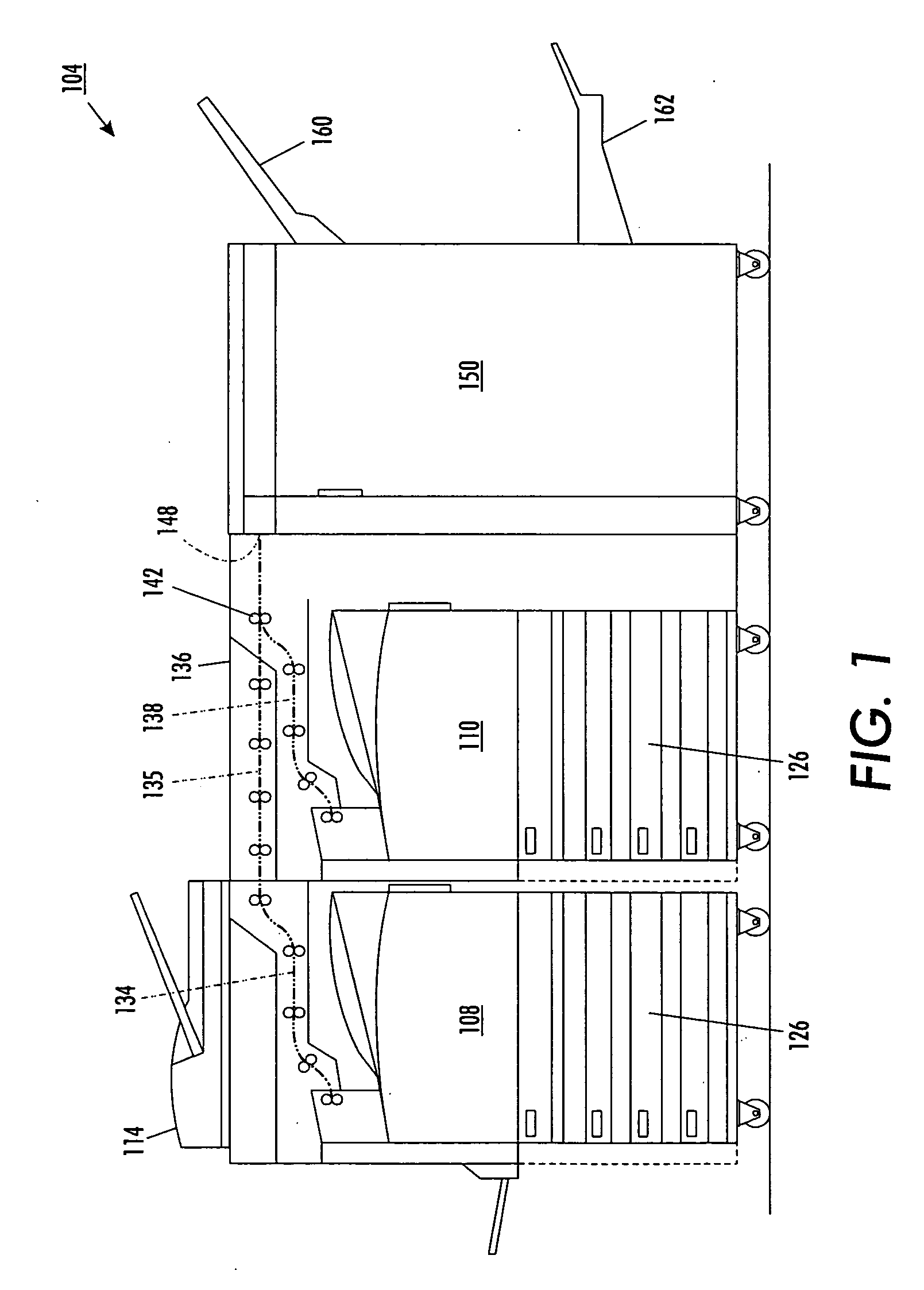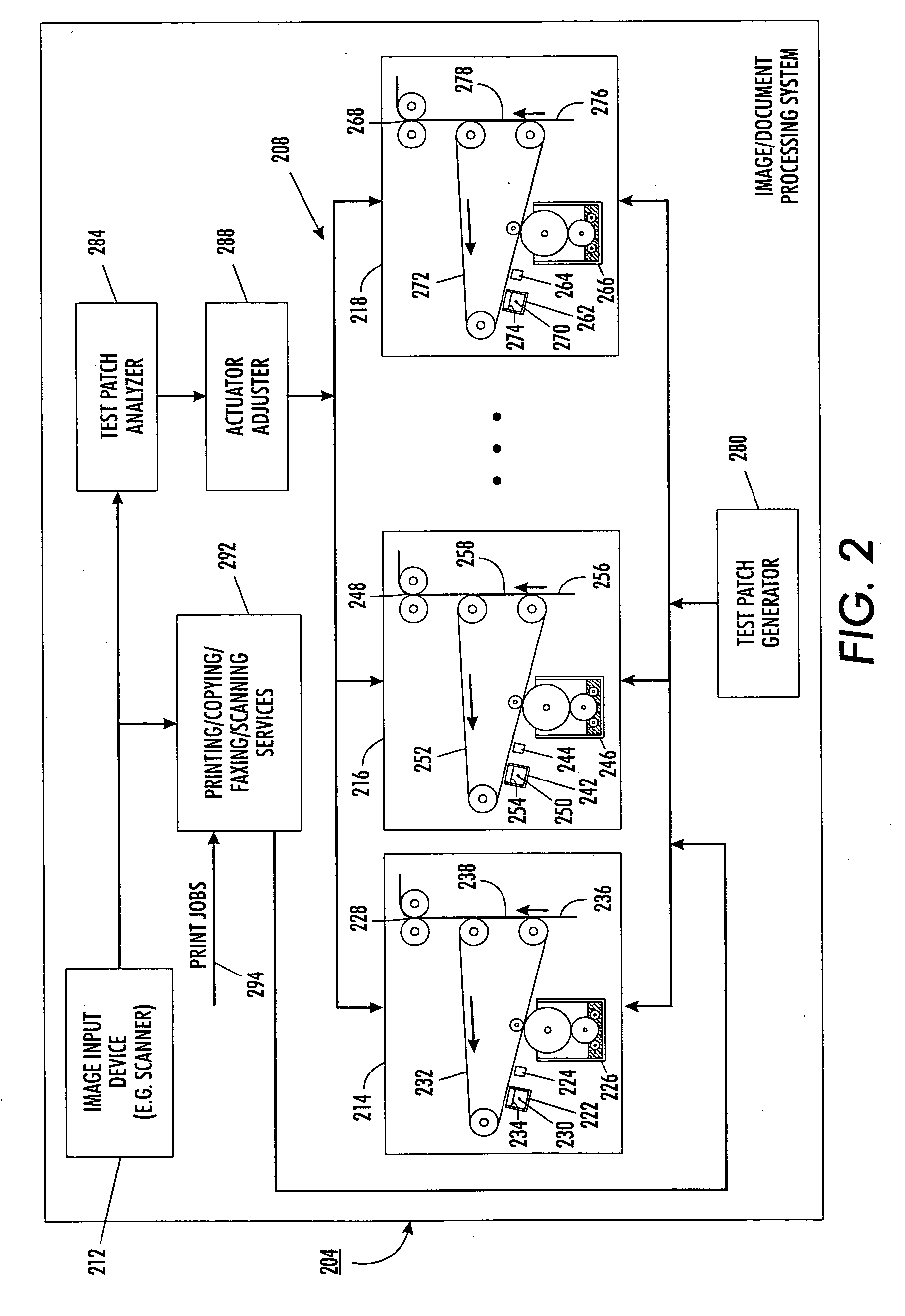Semi-automatic image quality adjustment for multiple marking engine systems
a marking engine and automatic technology, applied in the direction of instruments, electrographic process equipment, optics, etc., can solve the problems of affecting the lightness or darkness of a rendered or printed image, changing the toner concentration in the developer housing, and affecting the cost and physical space requirements of sensors and associated controls, so as to reduce the need for, or the effect of accuracy requirements
- Summary
- Abstract
- Description
- Claims
- Application Information
AI Technical Summary
Benefits of technology
Problems solved by technology
Method used
Image
Examples
Embodiment Construction
[0031] Referring to FIG. 1, a first document processing system 104, that might incorporate embodiments of the methods and systems disclosed herein, includes a first image output terminal (IOT) 108, a second image output terminal 110 and an image input device 114, such as a scanner, imaging camera or other device. Each image output terminal 108, 110 includes a plurality of input media trays 126 and an integrated marking engine (e.g., see FIG. 2 and related description below). The first IOT 108 may support the image input device 114 and includes a first portion 134 of a first output path. A second portion 135 of the first output path is provided by a bypass module 136. The second IOT 110 includes a first portion 138 of a second output path. A third portion of the first path and a second portion of the second path begin at a final nip 142 of the second IOT 110 and include an input to a finisher 150.
[0032] The finisher 150 includes, for example, first 160 and second 162 main job output...
PUM
 Login to View More
Login to View More Abstract
Description
Claims
Application Information
 Login to View More
Login to View More - R&D
- Intellectual Property
- Life Sciences
- Materials
- Tech Scout
- Unparalleled Data Quality
- Higher Quality Content
- 60% Fewer Hallucinations
Browse by: Latest US Patents, China's latest patents, Technical Efficacy Thesaurus, Application Domain, Technology Topic, Popular Technical Reports.
© 2025 PatSnap. All rights reserved.Legal|Privacy policy|Modern Slavery Act Transparency Statement|Sitemap|About US| Contact US: help@patsnap.com



